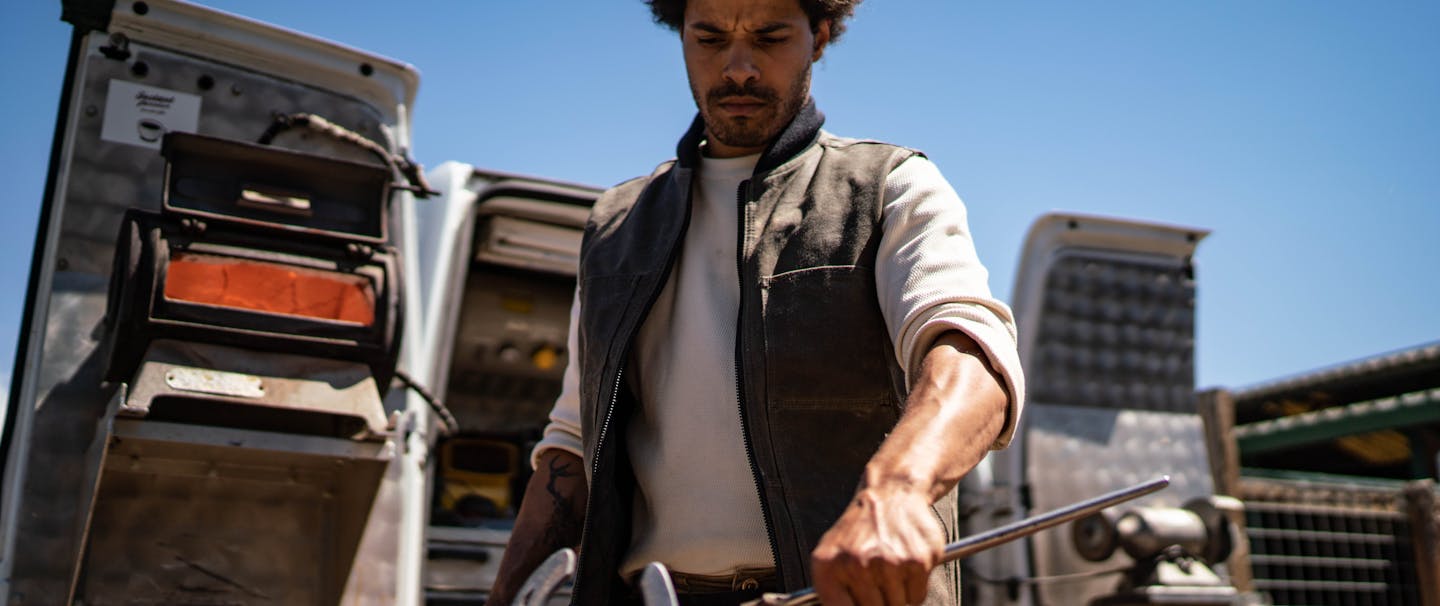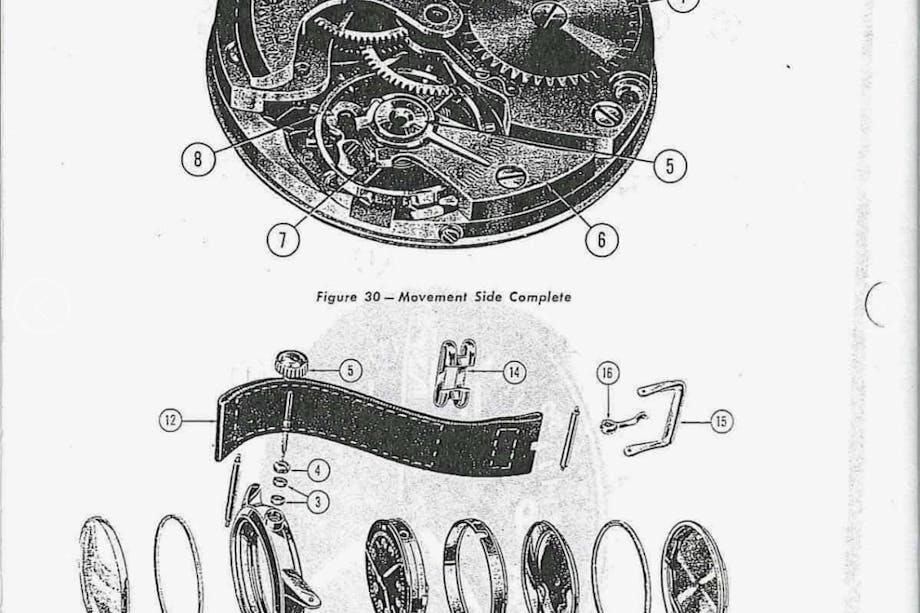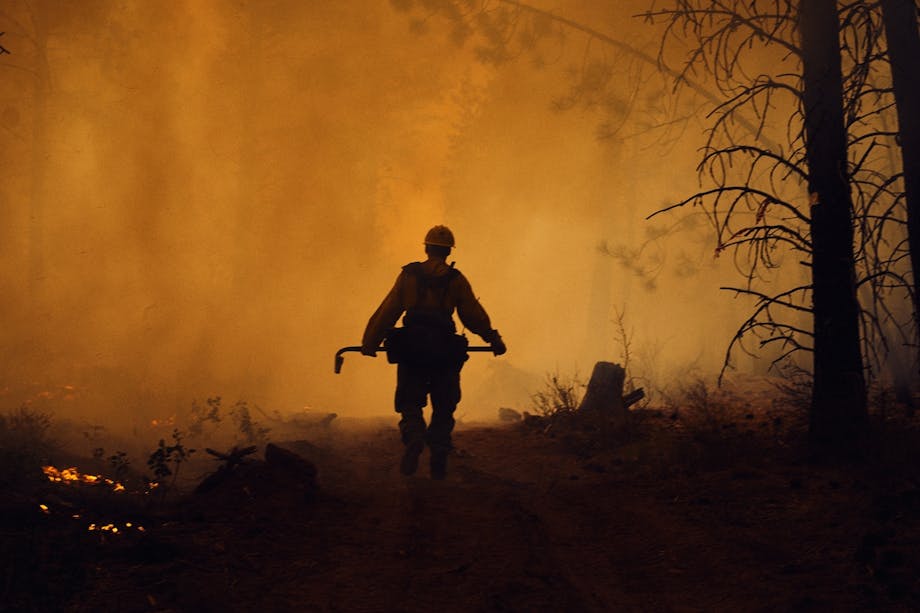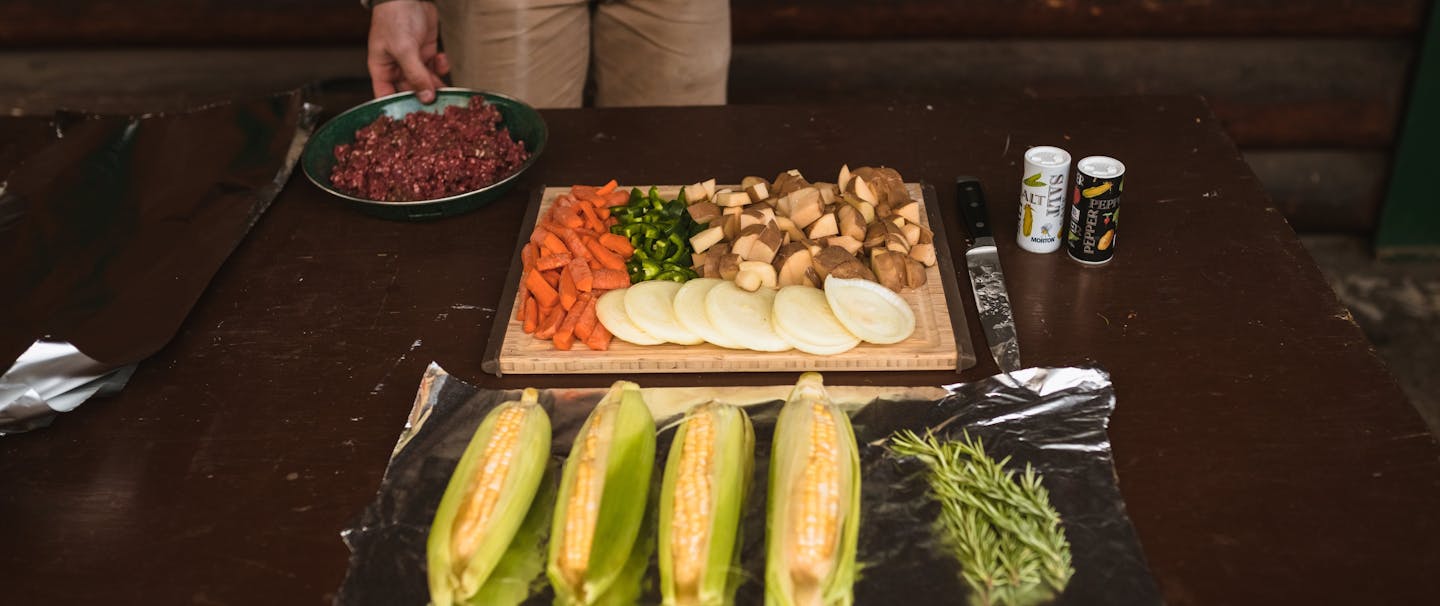Farriers spend years mastering the ancient craft of horseshoeing. It requires many hours of standing next to a hot forge, swinging a hammer, bending in uncomfortable positions, all within striking distance of a horse’s kick. “Ferrarius” is Latin for “of iron” or “blacksmith,” and farriering, in addition to skilled manipulation of hot metal, requires a deep knowledge of these powerful animals.
The North Bay Farriers are comprised of RT Goodrich, Brelen Parker, and Lila Scott. Just outside of Point Reyes Station, in the rolling hills of Northern California, they demonstrate what a day in the stables is like, and how they became farriers.

Operating out of a small but perfectly adapted van, the team works seamlessly around each other. One carries red hot shoes fresh from the mini forge, another swings their hammer on the anvil, while a third works through clouds of smoke produced from a hot shoe being applied to the hoof.
The first part of the process is removing the old shoe – a crescent-shaped piece of metal that protects the hoof from the ground. He or she then trims and cleans the keratin-rich hoof, as you would a fingernail. Once prepped, the new shoe is heated and pressed against the hoof, which causes a painless burning that simultaneously cleans the hoof, while also allowing the farrier to seat the shoe precisely. Once aligned, the shoe is secured on the hoof via driven nails and then finished off with a quick file.
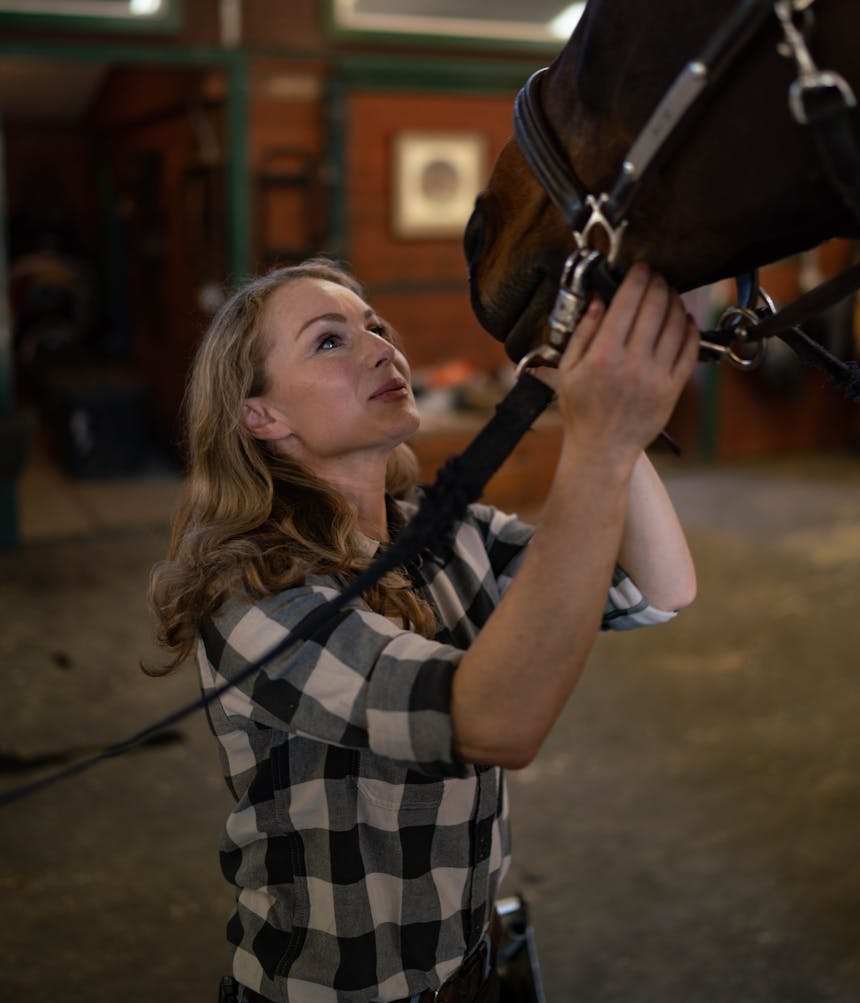
The rewarding nature of working with horses seems to outweigh the physical demands of the trade. Often farriers feel that the craft is something that seems to choose them; usually growing up around horses or falling in love with the farriering process after witnessing the work firsthand.
“My father was a blacksmith specializing in shipsmithing, so I grew up with a coal forge and blacksmith shop as part of our home and daily life. I was very involved in endurance horse racing and noticed the tremendous difference shoeing made to the performance of the horses. I started shoeing horses when I was fourteen and had several other jobs over the years until taking up farriery full time, five years ago.”
While watching them work, the horses remained calm and often predicted how to move next, based upon the posture of the farrier or the slight movement of a well-placed hand. These animals knew them well, but in farriery a slight mistake or misjudgment by a handler can lead to critical injury. If a farrier causes discomfort, the horse will remember and act accordingly. It is a relationship of trust.

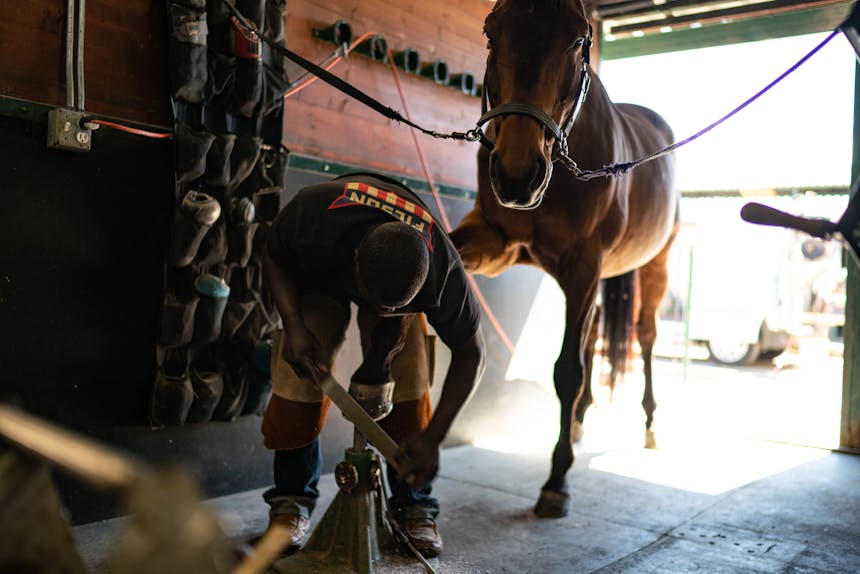
“Although the job is me working on their feet, I like to believe that it is a partnership and the horse and I are working together,” Parker explained. “[Horses] have highly sensitive energies. They teach me about my own internal energies. They have taught me to be introspective, consistent, and patient. Horseman, Tom Dorrence, once said ‘first you go with the horse, then the horse goes with you, then you go together.’”
